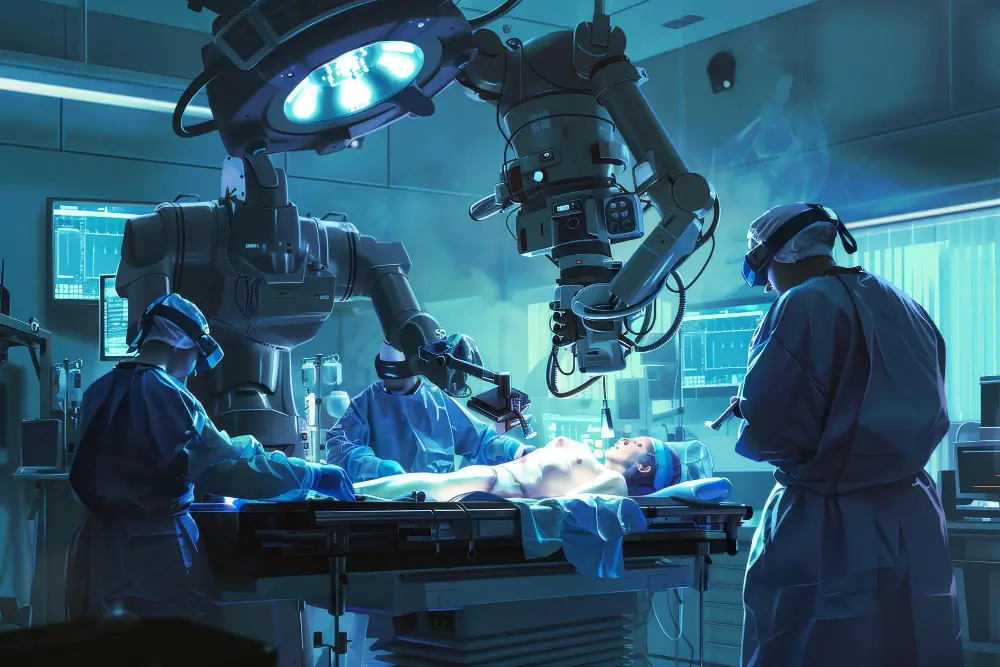Robotic surgery has changed how complicated surgeries are done, improving accuracy in surgical procedures and increasing patient safety and outcomes during recovery from these operations. Robotic surgeries were once thought of as ‘the future’, but have now evolved into a present-day reality, used for numerous procedures within multiple specialities like urology, gynecology, cardiothoracic, and oncology. The evolution of this amazing technology gives us insight into how far medicine has come and where it is headed. In this article, we will discuss in detail the evolution of Robotic surgery in Mohali.

History: Transition from thought to achievement
The origin of robotic surgery dates back to military and aerospace research in the late 1980s, when wounded soldiers were being operated on by surgeons at a distance. Early prototypes paved the way for robotics in surgery, with their development of mechanical arms designed to copy the way the surgeon would move the instruments used in surgery.
The major achievement was the FDA approval of the da Vinci Surgical System in 2000. The da Vinci system allows the surgeon to manipulate robotic instruments from a console with greater precision, visualise three-dimensional images, and gain access to delicate organs using fewer and smaller incisions. As costly and technical to train on as robotics were at first, the advantages of using robotic instruments in surgery have far outweighed these limitations. When using robotic instruments in surgery, a patient experiences smaller and fewer incision sites, resulting in less blood loss and a quicker recovery period than traditional surgical techniques.
The Present: Robotic Surgery redefining healthcare
Today, Robotic surgery in Mohali is not merely an option for patients; they’re increasingly becoming the go-to solution for a variety of procedures as well. The capability of robot systems is astounding, featuring greater depth of vision than was previously available, the ability to filter out tremors, and multi-jointed instrumentation that far exceeds human wrist movement capability. With robot-assisted surgeries, surgeons will now be able to perform procedures that were once either too dangerous or simply impossible using traditional methods. Real-time imaging, motion scaling, and improved ergonomics have taken surgeons’ work accuracy to levels never seen before, resulting in shorter hospital stays, less time spent recuperating by the patient, less scarring, and less discomfort than ever experienced after surgical procedures.
Furthermore, robotics has reached new horizons by becoming available for use in a multitude of different areas of surgery, including surgical procedures for treating cancer, weight loss surgery, orthopedic joint replacements, and even microsurgical procedures that require precision down to millimeters.
The future: AI and AR
As for the future of Robotic surgery in Mohali, is expected to be monumental. Three new technologies, which include AI, machine learning, and augmented reality, will merge to create new levels of artificial intelligence, improving both pre-surgical planning and intra-operative decision-making. The addition of AI during surgery will enable surgeons to receive instant feedback on robot-controlled movements and, therefore, allow them to assess, anticipate, and ultimately navigate through complications more expertly.
If you are looking for the Best robotic surgeon in Mohali, or the best Robotic surgery hospital in Chandigarh, Sohana Hospital might just be the best option for you. Sohana Hospital Mohali is home to the World’s Most Advanced robotic surgical systems and North India’s most trusted and experienced robotic surgeons who provide the most comprehensive and comfortable surgical experience to the patients. Book your appointment today!
